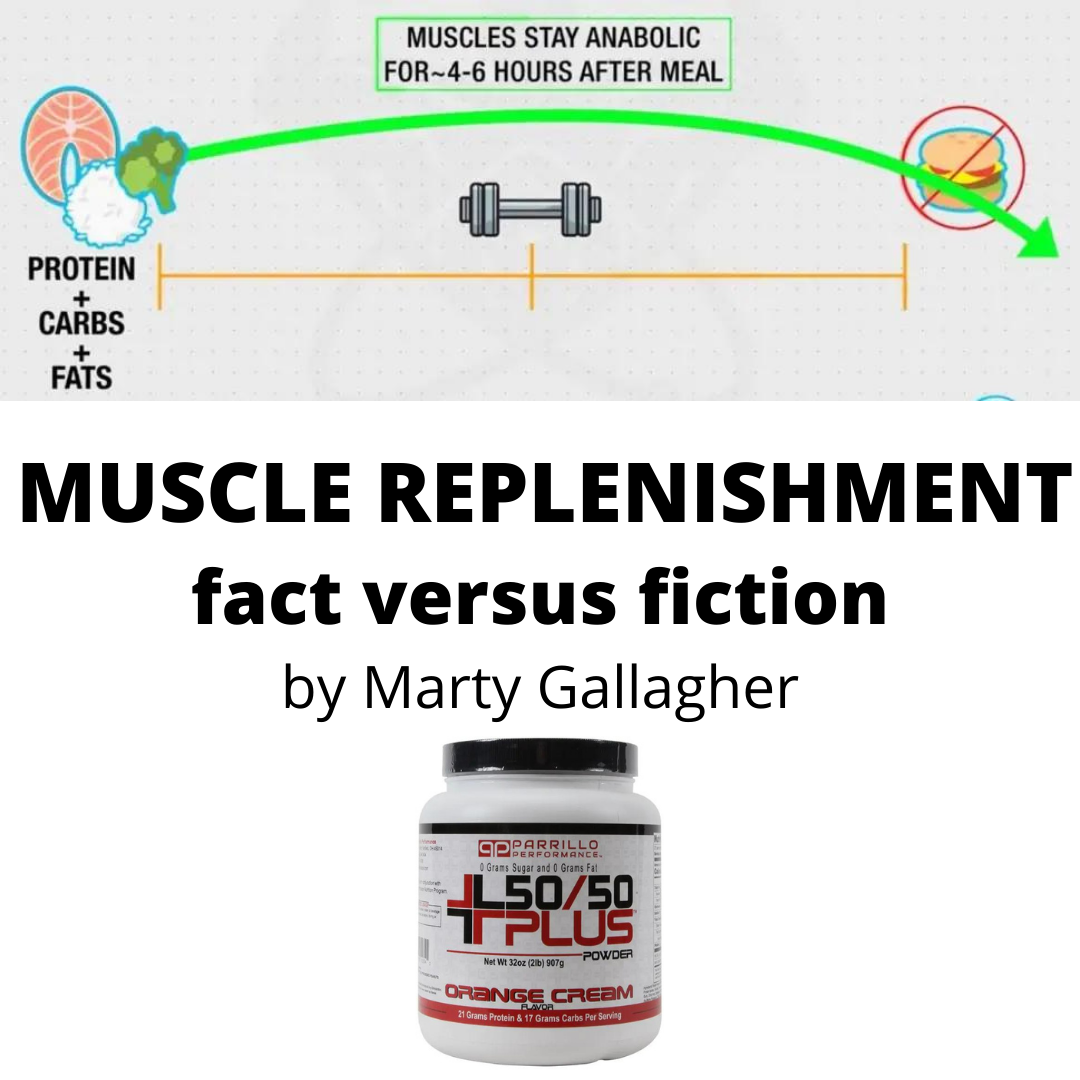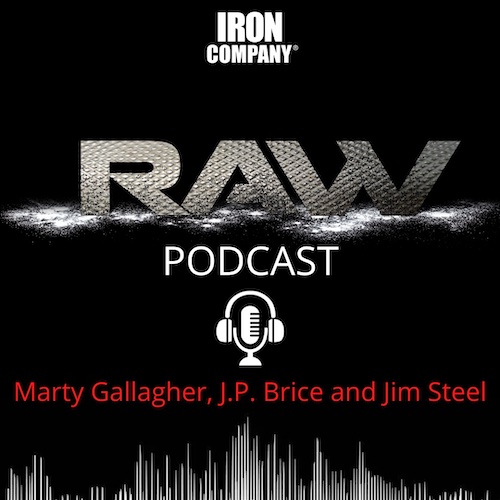
Muscle Replenishment: fact versus fiction
Getting muscled-up requires calorie-induced anabolism
These experts feel that once a meal of ‘quality calories’ is eaten, anabolism, the fertile field, is established and you stay anabolic for 4-6 hours.
I believe they are saying don’t refuel with that delicious cheeseburger. Obviously, whoever designed the chart is a beta male and not a powerlifter.
For a hard-training athlete, for those crushing themselves in result-producing, never-ending progressive resistance training sessions, it is a never-ending battle to continually pre-fuel to establish anabolism and a never-ending battle to continually refuel afterwards to accelerate recovery and muscle growth. Optimally, the pre-and-refueling is done with quality nutrients. There are three aspects of the muscle growth equation: train the muscle, feed the muscle, rest the muscle. What to feed the body? how much to feed the body? when to feed the body? These are crucial questions.
To obtain optimal results for your time and effort, optimal training is supported, underpinned, with optimal replenishment and optimal rest. If the body is fed and rested, it attains anabolism, an optimal metabolic state wherein all the preconditions required for muscle growth are present and accounted for. When anabolic, all that is needed to grow muscle is a body-shattering high intensity workout. Calories and sleep create anabolism. A progressive resistance training session of sufficient intensity triggers hypertrophy and in doing so depletes nutrients at an accelerated rate.
Elite iron men are nothing if not logical and their collective consensus was (and is) that attaining anabolism heading into a session and refueling after a body-battering training session made perfect sense. Most smart modern trainees will replenish with a liquified post-workout replenishment shake, usually a protein/carb mixture that gets into the system quickly. If the concoction is potent, this is a good strategy.
The commonly held belief is that a “window of opportunity” opens after a sufficiently intense training session. Any nutrients ingested while the window is open will be assimilated and distributed 2-3 times faster than normal. How long is the window of opportunity open? Depending on who you consult, expert opinion ranges from 30 minutes to three hours. Regardless how long the window is open, the idea is to inhale a new supply of the nutrients your body has just burned through in the workout. The post-workout replenishment rationale is powerful: results from the just-completed workout are improved by replenishing.
In the olden days, iron men were less discriminating in selecting their replenishment calories. Since time immemorial, hardcore resistance trainers instinctively and intuitively ate or drank after training. In modern times, an entire industry has sprung up catering to quick-fix post-workout replenishment. The old timers in the old days would down quarts of cold whole milk or go stuff their faces at the local diner on meatloaf and mashed potatoes.
What constitutes the ideal post-workout replenishment meal or shake? What is it we are seeking to replenish? No one has studied replenishment longer and harder than bodybuilding guru John Parrillo. In the early 1980s, John created a line of high-powered nutritional supplements out of frustration with the anemic nutritional supplements of the day.
John made his bones winning the Ohio state powerlifting championships, benching 400 without a shirt weighing 180 in 1977. John segued into a topflight bodybuilder prep coach and a nutritional guru: he handled IFBB pros and Olympia winners. The protein powders of those early years were pathetic soy products. John began making potent supplements and the (bodybuilding) world beat a path to his door. In 1985 John Parrillo introduced the world’s first post-workout replenishment supplement, 50-50 Plus.
Called 50-50 Plus because the balance is roughly half carb and half protein, Parrillo determined that what the body needed, post-workout, was an equal dose of high biologic-value protein and slow-release (glycogen restoring) carbohydrate. With no fat or sugar, a single serving of 50-50 Plus provides 21 grams of protein and 17 grams of carbs. I am addicted to the delicious orange cream flavor. I create a double serving mixed thick with cold water or raw whole milk: mixed with water = 42 grams of protein, 34 grams of carbs and 320 calories. To me, this is a simple, quick, effective, and delicious way to replenish. Most importantly, workout results are improved. How incredible is it that? Results from a workout are improved by drinking a delicious shake while the window of opportunity is open.
For those without 50-50 Plus, seek to replicate the balance with a food meal with similar nutritional stats. As mentioned, old timers would drink quarts of whole milk obtained from local dairies post workout. Here are the nutritional stats on a quart of whole milk…
| Protein | 31.5 grams |
| Carbohydrates | 44 grams |
| Fat | 32 grams |
| Sugar | 57 grams |
| Calories | 586 |
A quart of whole milk is a meal in itself: 600 calories, 32 grams of fat, 32 grams of protein, 44 grams of carbohydrate. Even half that amount provides ample amounts of amino acid-restoring protein, recovery-accelerating milk fat and 44 grams of glycogen restoring carbohydrate. Naysayers point to the 57 grams of sugar in a quart of milk. There are two points to be made: first, the 32 grams of fat has a deadening effect on the insulin spike associated with 57 grams of sugar. Secondly, assuming the rest of the athlete’s nutrition and eating are tight and disciplined, a controlled insulin burst after a savage training sessions heightens the benefits.
Empirical experience has taught that calories, drunk or eaten, in ample amounts, pre or post workout, creates anabolism, the fertile field. When anabolic, all the prerequisites for muscle growth are present and accounted for. If a high intensity resistance training session is undertaken while anabolic, muscle and strength increases occur. Anabolism can be established with trash calories or quality calories: choose trash calories and end up muscular, strong, and covered in body fat. Choose quality calorie and add lean muscle mass devoid of an unacceptable amount of body fat.
Ideally, post-workout replenishment provides what has been depleted. Insist on “over-training” (i.e., training hard enough to trigger hypertrophy) and under-eating, starve the body, and it is only a matter of time before the body breaks down. The ancient iron athletes used to have a saying that was so widely repeated it became a cliché, “There is no such thing as over-training - only under-eating.” Optimally, after traumatizing the body in result-producing, hypertrophy-inducing, strength-improving, capacity-exceeding, training session, the traumatized body needs to be doused with quality nutrients. If you are training hard enough and neglecting post-workout replenishment, you are leaving muscle and strength gains hiding in plain sight.
About the Author - Marty Gallagher
As an athlete Marty Gallagher is a national and world champion in Olympic lifting and powerlifting. He was a world champion team coach in 1991 and coached Black's Gym to five national team titles. He's also coached some of the strongest men on the planet including Kirk Karwoski when he completed his world record 1,003 lb. squat. Today he teaches the US Secret Service and Tier 1 Spec Ops on how to maximize their strength in minimal time. As a writer since 1978 he’s written for Powerlifting USA, Milo, Flex Magazine, Muscle & Fitness, Prime Fitness, Washington Post, Dragon Door and now IRON COMPANY. He’s also the author of multiple books including Purposeful Primitive, Strong Medicine, Ed Coan’s book “Coan, The Man, the Myth, the Method" and numerous others. Read the Marty Gallagher biography here.




